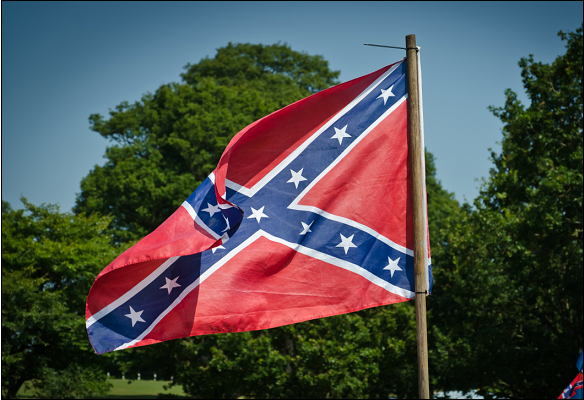
The Confederate flag and other controversial items on campus
July 16, 2015
With the recent debate concerning the Confederate flag on government land—whether it should be permitted in such instances, or be left to private property—one may begin to wonder what kind of impact these sort of issues have on public universities such as Central.
Is the confederate flag, for instance, permitted in the learning environment? What about other potentially offensive imagery, such the Nazi flag and swastikas, the Rainbow flag, the Japanese Imperial flag, and certain religious imagery—either denouncing a major religious icon, or in favor of a less respected faith?
Students’ rights and the university’s objective
Richard DeShields, Associate Dean of Student Success, recognizes the fine line between upholding students’ right for self-expression and protecting the learning and living environment of others.
“We do value students’ freedom of speech,” DeShields said. “That is critical.”
Students are allowed to have such items within the confines of their dorms. It is when these items are placed in view of others, such as outside the door or in a window, that a dialogue must be opened.
“Our first line of contact is really to talk with the student and be more educational,” DShields said. “Do you know what this means? How do you think it’s going to affect the people around you?”
DeShields said there have been times when things like swastikas have appeared as vandalism, and those are removed. But in regards to students’ personal belongings, it generally becomes a problem only if the item is targeting a specific group, such as students of color or those who identify as LGBTQA+, or if it is on the grounds of harassment or discrimination.
The residence halls’ staff is vigilant, however, and any item of concern is generally noticed and dealt with accordingly.
“We see this. We observe this,” DeShields said. “We’ll automatically call in the student and have a conversation.”
Residence hall staff will then initiate an education-based dialogue with the student, making sure that student is fully aware of what they are doing and what they might encourage by doing so.
“As someone who has the flag hanging, people are going to come to you and ask questions,” DeShields said. “We try to be proactive in the conversation.”
The other side of controversy
While widely considered to be positive sign of diversity and inclusion, many consider the Rainbow flag and other LGBT-related emblems to be as offensive as many of the other items listed above.
However, this flag is not only allowed, but embraced on campus.
“I choose, outside my office, to have a “safe space” sticker,” DeShields said. “For some people, that may cause them to not want to talk with me.”
DeShields said this is again about self-expression and inclusivity.
“Students identify with [the Rainbow flag] in different ways,” DeShields said. “It’s a form of expression, and we do allow that at a university.”
Many students who back the use of the Confederate flag do so because they see it in a similar light—as a symbol of pride. In this case, Southern pride, and they identify with it accordingly.
However, as DeShields said, often when students do some research into what else is behind the flag, they begin to realize why many see it as an offensive symbol.
Opening a conversation at Central
DeShields said that overall, Central students are very responsible, and it’s good to have a debate in a healthy way, where students can respect their differing beliefs and opinions.
“We have Muslims, we have Christians, we have atheists, we have agnostics,” DeShields said. “And we allow everyone to celebrate those different beliefs and values.”
However easy it may be for opinions to clash and problems to arise from it, DeShields reiterates the importance of talking through differences and embracing the diversity of the people and thinking on campus.
“University is a place where conversation should be happening,” DeShields said.
And no time is as crucial to be having these conversations as when the country itself is divided upon the issues at hand.
“It is a fine line [between students’ rights and the university’s obligation], and it’s something that universities all over the country are dealing with,” DeShields said.
But since these matters regarding offensive self-expression are often a matter of education and awareness—of underlying meaning and how this will affect fellow students—we can never start too soon in talking about them and getting the issues out into the open, to be more readily available to examination and, if need be, alteration.
“If we never have a debate, we’ll never learn,” DeShields said.
